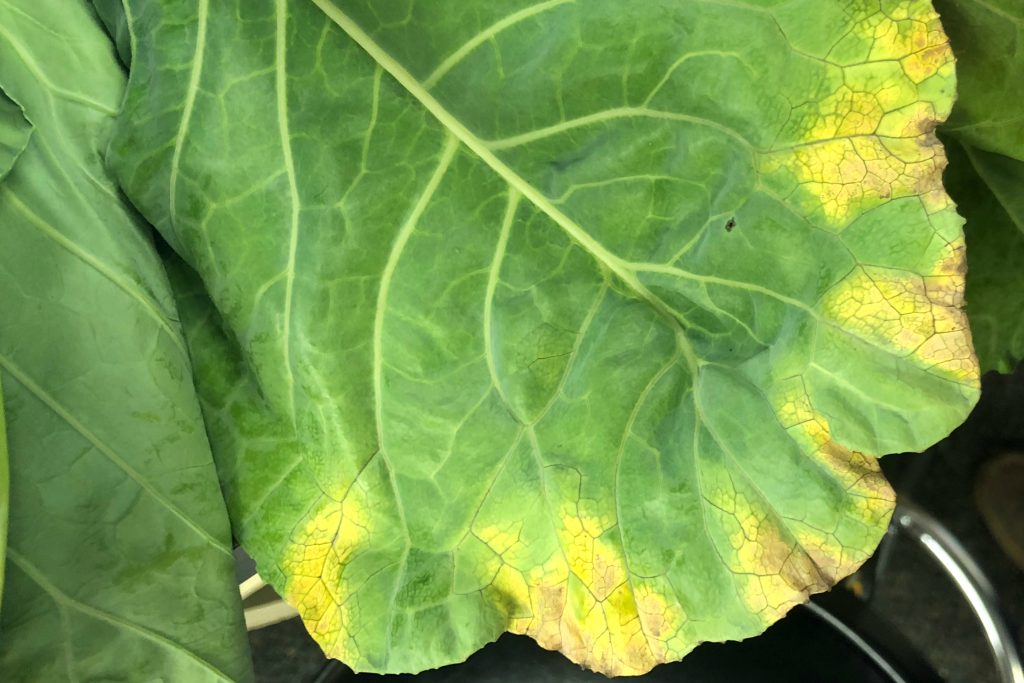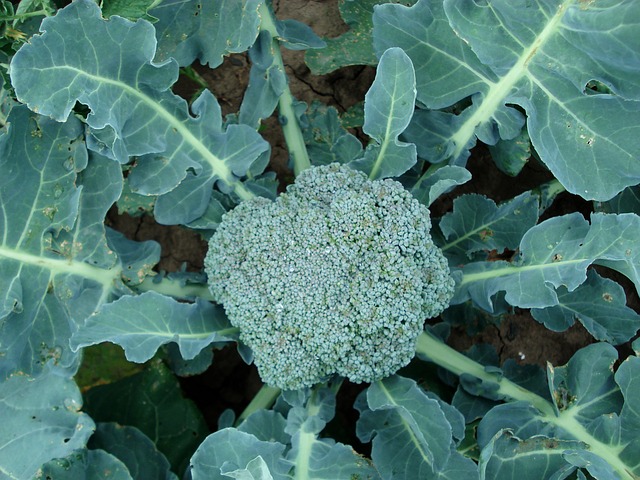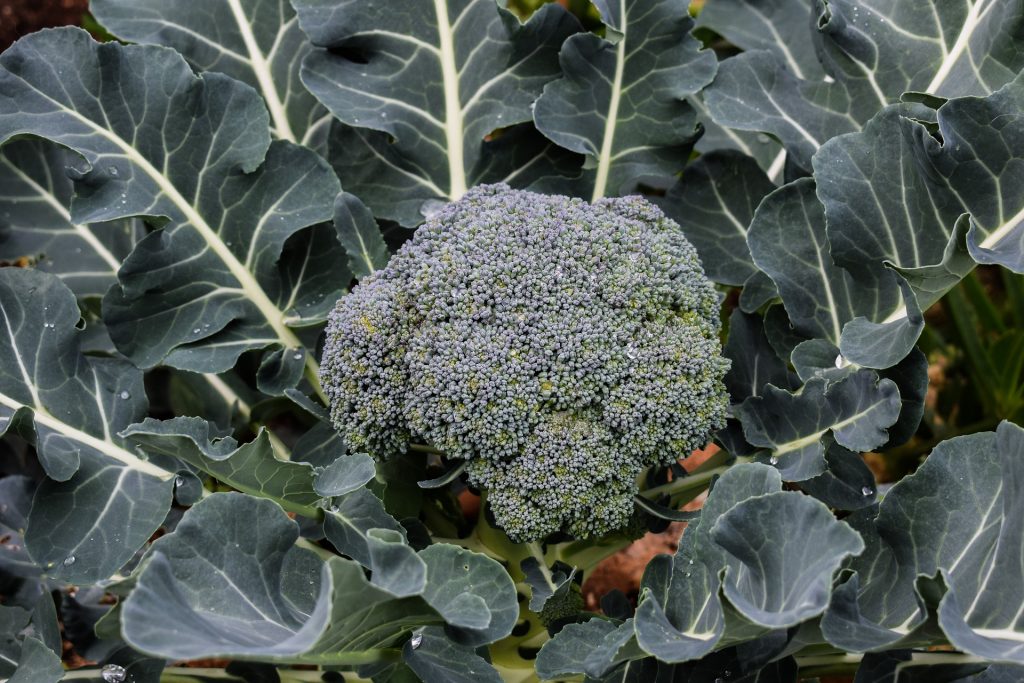Broccoli is a crop that requires high amounts of nitrogen from the soil. If the soil lacks nitrogen, then the broccoli leaves can turn yellow. Hence the main and common reason for broccoli leaves turning yellow is a deficiency of nitrogen.
In this, the lower parts get affected first and it continues towards the whole plant. In critical conditions, the whole plant can even turn yellow and die. This broccoli is edible but can taste bitter. One can also cut off the yellow part and use the rest.
Besides, leaves don’t just turn yellow due to less nitrogen but this can also be due to lack of other nutrients. Along with a lack of nutrients, moisture stress can be another reason for this.
So to stop your broccoli leaves from turning yellow, one should make sure that your plants get enough nitrogen and all other nutrients along with proper moisture. Also to keep your broccoli fresh, you should avoid wrapping your vegetable in plastic and use damp paper towels instead before storing them.
Why do my broccoli leaves turn yellow:
Broccoli is a crop grown in cold climatic conditions. It requires sufficient light. It requires Sandy soil that is rich in nitrogen and has a slightly acidic pH. There are mainly three situations where the leaves of a broccoli plant can turn yellow.
The first one of them is becoming yellow with time also called maturity yellowing, the next is due to lack of nitrogen and the last is any fungal disease.

Getting yellow as it becomes mature:
The head or the main edible part of the broccoli is made up of very small flowers. When the broccoli becomes mature, ready to harvest then these flowers turn yellow and start to produce seeds if they are not harvested for a long time.
However, these seeds can be used for the next generations. When the main part becomes mature, the buds start expanding and till the flower bursts, the head part of the plant turns yellow. This yellowish broccoli hence lacks all the nutrients and is also bitter.
Lack of nitrogen:
As told earlier, broccoli needs a lot of nitrogen from the soil. If the soil lacks nitrogen, then the broccoli leaves will start turning yellow. Starting from the lower part the leaves gradually turn yellow to upwards. In uttermost conditions, the whole plant can turn yellow and die at the end.
Any fungal disease:
Fusarium oxysporum is a type of fungus that affects broccoli plants that can cause yellowing of the leaves of the plant. This fungus mainly enters the plant through the new roots or through old roots during transferring the plant to the main field. This fungus makes its way through the stem to leaves resulting in the leaves turning yellow. This fungus is very dangerous and kills the plant.
Along with these above-mentioned reasons some diseases are also the reason behind the yellowing of leaves. Downy mildew is the first disease that is accountable for the broccoli leaves turning yellow. It is also a type of fungal disease.
Must Read: Growing the Microgreen Broccoli
The fungus named Peronospora parasitica causes Downy mildew. This fungus can act upon both seedlings as well as the mature plant part. In this, the leaves of the broccoli turn yellow. High moisture content supports this fungal disease. In this disease, mainly the leaves at the bottom get affected.
Prevention of Downy mildew: For avoiding this, one should plant the crops at sufficient distances. Also, take care that you water the crop near the roots so that the leaves don’t get wet. Besides this one can also use chemicals or fungicides to control the disease.
You should spray the fungicides at weekly intervals after transplanting the plant. Use these fungicides on the leaves present at the bottom. Avoid fungicides when the temperature is more than 35° C.
The next one is an Alternaria leaf spot. It is again a type of fungal disease in which Alternaria species is responsible. This disease occurs when the conditions are warm as well as moist. You can see small dark shade spots on the stems as the symptoms of the disease.
In the matured plants round spots of brown color can be noticed on the leaves and the leaves gradually turn yellow with time in this disease. A temperature of 15 to 35 °C supports the disease.
How to prevent and treat this disease: one should clean up all the debris after harvesting. This disease can also be very easily spread through the infected tools or wind or splashing water or through insects hence one should take care of all this. Other than this one can also use chemicals and fungicides to control the disease.
Black rot is the next disease that is spread by bacteria named Xanthomonas campestris pathovar campestris. In this disease mainly the parts above the ground get affected. In this V-shaped lesions of yellow color appear on the leaves that expand with time.
For black rot disease, no chemical cure is available so the plant must be prevented from this disease. For this, all the debris should be removed from the field.
Also, weeds should be cut off from time to time. Seeds of infected plants should not be used at all. Wind, splashing water, insects, etc. are also the reason behind the disease. High temperature and moisture also support the disease so these conditions should be avoided. Disease-free tools should be used in broccoli farming. Also, the seeds should be free from infection.
Bottom line:
There are many different reasons for broccoli leaves turning yellow. They may be insufficient nutrients or some diseases. So one should provide sufficient amounts of required nutrients to the crop and also keep a check on the symptoms so that if any disease is there it can be treated on time.


